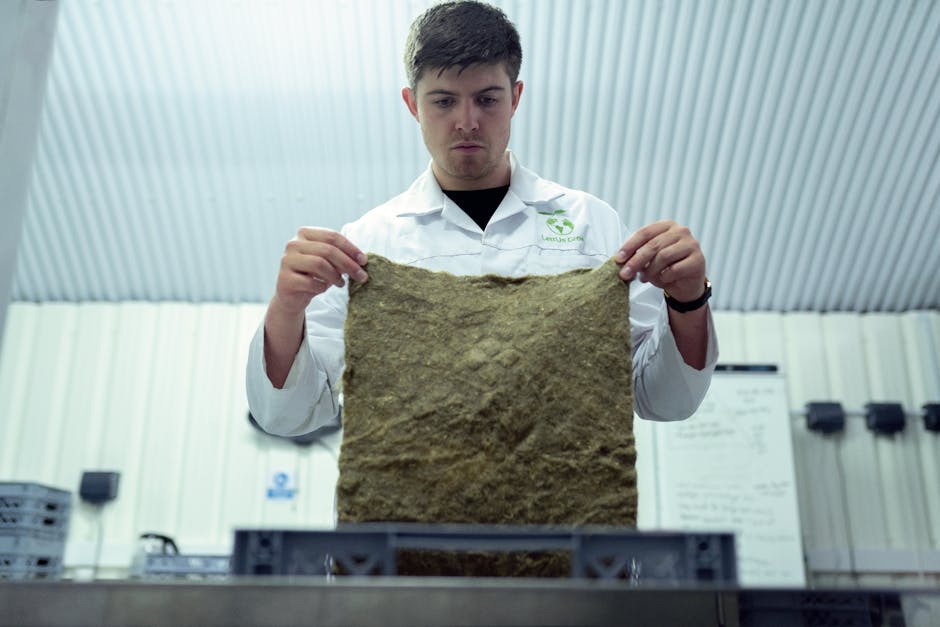Sustainable Material Innovation: Pioneering a Greener Future
Welcome to the era of sustainable material innovation, where science, technology, and environmental consciousness converge to revolutionize the way we produce and utilize materials. In a world grappling with climate change, resource depletion, and pollution, the quest for sustainable materials has become more urgent than ever. But what exactly is sustainable material innovation, and how is it shaping the future of industries and everyday products? Join us on a journey to explore the ins and outs of this transformative field, from its origins to its potential impact on our planet.
The Beginnings of Sustainable Material Innovation

At its core, sustainable material innovation is about developing materials that minimize environmental impact while maximizing performance and durability. This concept is not new; in fact, it has roots that stretch back centuries. Historically, civilizations have always sought ways to make the most of the resources available to them, whether through recycling, repurposing, or using natural materials in creative ways. However, the modern push for sustainability in materials can be traced back to the rise of the environmental movement in the mid-20th century.
As concerns about pollution, deforestation, and climate change grew, so did the need for more environmentally friendly materials. This led to the development of concepts like cradle-to-cradle design, which emphasizes the continuous reuse and recycling of materials to minimize waste. Today, sustainable material innovation encompasses a wide range of approaches, from bio-based materials made from renewable resources to recycled materials that give new life to old products.
The Rise of Bio-Based Materials

One of the most exciting developments in sustainable material innovation is the rise of bio-based materials. These materials are made from renewable resources like plants, algae, or even bacteria, offering a greener alternative to traditional petroleum-based materials. Bio-based plastics, for example, can be used to create everything from packaging to clothing, reducing our reliance on fossil fuels and mitigating the environmental impact of plastic waste.
One notable example of bio-based materials is mycelium, the root structure of fungi. Mycelium can be grown into various shapes and forms, making it a versatile material for applications ranging from building construction to packaging. Companies like Ecovative Design have pioneered the use of mycelium-based materials, showcasing the potential of nature-inspired solutions in sustainable design.
Recycled Materials: Closing the Loop

Another key aspect of sustainable material innovation is the use of recycled materials. By repurposing waste materials like plastic bottles, cardboard, or even old electronics, we can reduce the demand for virgin resources and divert valuable materials from landfills. Recycled materials can be just as durable and high-performing as their virgin counterparts, making them a viable option for a wide range of applications.
For example, recycled PET (rPET) is commonly used in the production of textiles, bottles, and packaging. By giving new life to discarded plastic, rPET helps to conserve energy, reduce greenhouse gas emissions, and minimize the environmental impact of plastic production. Companies like Patagonia have been at the forefront of using recycled materials in their products, demonstrating the feasibility and benefits of a circular economy approach.
Innovations in Sustainable Packaging

One area where sustainable material innovation is making a significant impact is in the realm of packaging. The rise of e-commerce and online shopping has led to a surge in packaging waste, prompting companies to rethink their packaging materials and practices. From compostable bioplastics to reusable packaging solutions, there is a growing emphasis on reducing the environmental footprint of packaging throughout its lifecycle.
Companies like Loop are pioneering a new model of packaging that focuses on durability, reusability, and recyclability. By offering products in durable containers that can be returned, cleaned, and refilled, Loop is challenging the disposable packaging paradigm and promoting a more sustainable approach to consumption. This shift towards circular packaging systems has the potential to revolutionize the way we think about packaging and waste in the modern world.
Challenges and Opportunities in Sustainable Material Innovation
While the potential benefits of sustainable material innovation are vast, the field is not without its challenges. One of the key obstacles facing the widespread adoption of sustainable materials is cost. In many cases, sustainable materials can be more expensive to produce than their conventional counterparts, making them less accessible to companies and consumers. However, as technology advances and economies of scale are realized, the costs of sustainable materials are expected to decrease, making them more competitive in the marketplace.
Regulatory hurdles and lack of standardization also pose challenges to the adoption of sustainable materials. Different regions have varying regulations and certifications for sustainable materials, making it difficult for companies to navigate the complex landscape of sustainability standards. Harmonizing these regulations and establishing clear guidelines for sustainable materials could help streamline the adoption process and encourage more widespread use of sustainable materials.
The Future of Sustainable Material Innovation
Looking ahead, the future of sustainable material innovation holds great promise for addressing some of the most pressing environmental challenges we face. From reducing plastic pollution to minimizing carbon emissions, sustainable materials have the potential to transform industries, products, and practices in a positive way. As technology advances and awareness of sustainability grows, we can expect to see even more innovative solutions emerge in the field of sustainable materials.
Ultimately, sustainable material innovation is not just about creating greener products; it is about reimagining our relationship with the materials that surround us. By adopting a more sustainable approach to materials, we can build a more resilient and regenerative economy that benefits both people and the planet. The choices we make today in terms of materials will shape the world we leave for future generations, making sustainable material innovation a critical endeavor for a sustainable future.
Conclusion: Shaping a Greener Tomorrow
As we wrap things up, it is clear that sustainable material innovation is not just a trend but a necessity in our quest for a more sustainable future. By harnessing the power of nature, technology, and creativity, we can pave the way for a world where materials are no longer a source of environmental harm but a force for positive change. Whether through bio-based materials, recycled resources, or innovative packaging solutions, sustainable material innovation offers a path towards a greener tomorrow.
So, as we embark on this journey towards a more sustainable future, let us remember the power of innovation, collaboration, and conscious consumption in shaping the world we want to live in. Together, we can drive the evolution of sustainable materials and create a legacy of responsible stewardship for generations to come.




